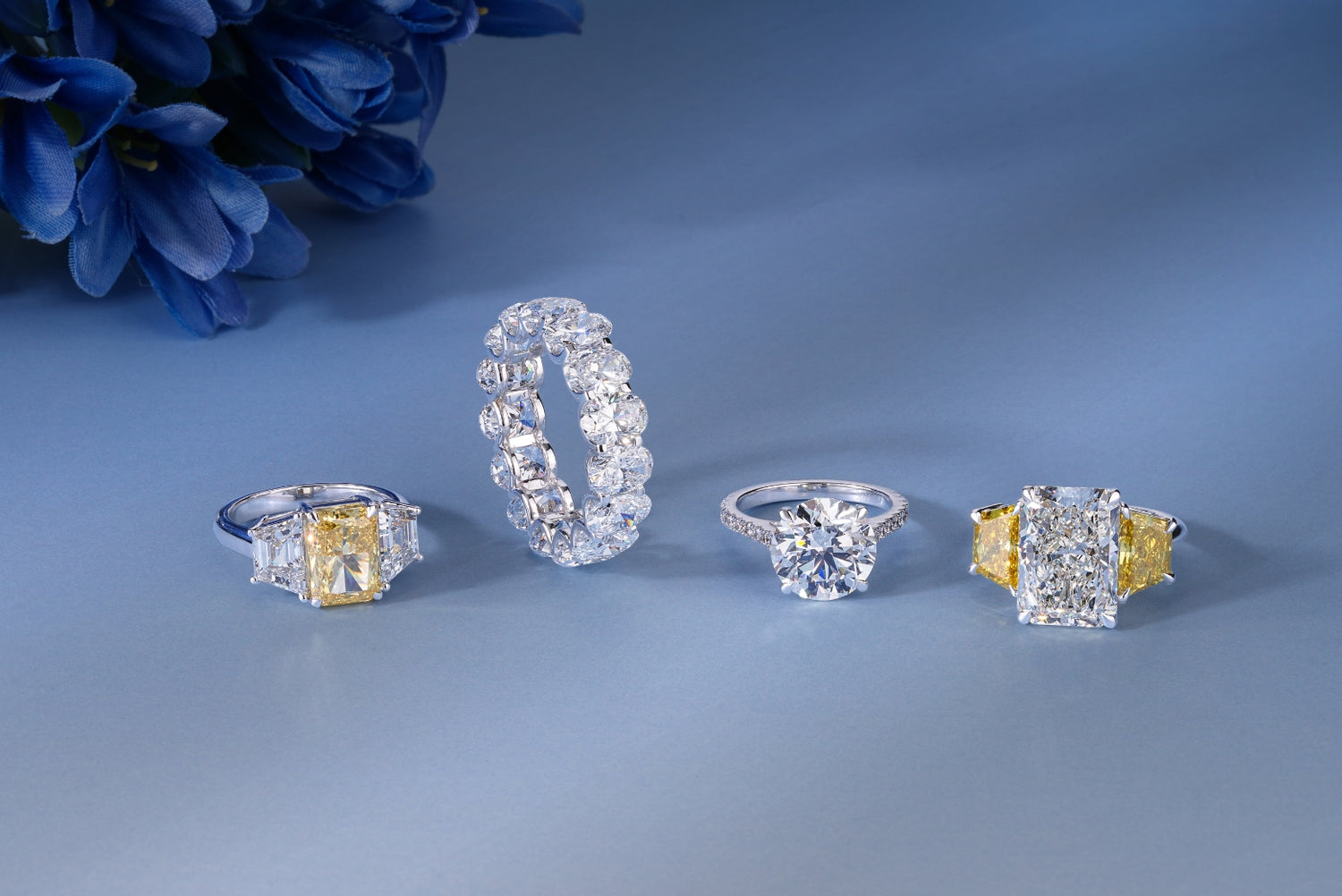Have you ever been to a jeweller and found yourself nodding along as they switched between terms like ‘engagement ring,’ ‘wedding ring,’ and ‘wedding band’? You're not alone. After twenty minutes of pretending to understand, many Australians finally ask the question that's been nagging them, “Mate, what exactly is the difference?”
The confusion is understandable. These pieces of jewellery serve different purposes, carry distinct meanings, and often look quite different from each other. Yet many people use the terms interchangeably, creating unnecessary confusion for couples planning their future together.
The Engagement Ring Story
Every engagement ring features a prominent centre stone, in this case a diamond, designed to make a statement. This is the ring featured in Instagram proposal photos, the one that sparkles in crowded restaurants, and the piece that friends want to examine as soon as you share your news.
The tradition behind engagement rings stretches back centuries, though the modern version we recognise today became popular in Australia during the mid-20th century. The ring symbolises a promise of marriage, a tangible representation of commitment before the actual wedding takes place.
Most engagement rings feature elaborate settings. Think solitaires with raised diamonds, halos that amplify sparkle, or vintage-inspired designs with intricate metalwork. The goal is to showcase the centre stone beautifully, prioritizing visual appeal over everyday practicality.
Timing is important with engagement rings. They are typically given during the proposal, worn throughout the engagement, and then accompanied by a wedding band during the ceremony. In Australia, most people wear their engagement ring on the left hand's ring finger, following Western customs.
Wedding Bands Explained
Wedding bands tell a different tale. These rings are exchanged during the wedding ceremony, usually during the vow exchange. Both partners typically exchange wedding bands, which makes this ritual more inclusive than a private engagement ring custom.
Wedding bands are designed to focus on comfort and durability. Most are simple metal bands, sometimes featuring small diamonds or decorative elements, rarely having large stones. This practical design means you can wear them daily for years. They’re more robust, designed to withstand everyday wear.
Wedding bands symbolise the completed commitment. While engagement rings represent a promise, wedding bands represent the fulfilment of that promise. They're meant to be worn constantly, becoming part of your daily identity rather than special occasion jewellery. And so, many Australian couples choose matching or coordinating wedding bands. Twinning for life, anyone?
The Practical Differences
Beyond symbolism, these rings serve different practical purposes. Engagement rings are designed for occasional wear during the engagement period. On the other hand, wedding bands are built for constant use from day one.
Consider the structural differences. Engagement rings often feature raised settings that can catch on clothing, hair, or objects. This design choice prioritises beauty over practicality. Wedding bands, however, sitting close to the finger, reduce snag risks and make daily activities smoother.
Maintenance needs also differ significantly. Engagement rings with multiple stones or intricate settings require more frequent professional cleaning. In contrast, wedding bands, especially simple metal ones, need little maintenance beyond occasional polishing.
Cost differences are significant too. Engagement rings usually represent a larger investment due to their centre stones and complex settings. Wedding bands often vary from simple designs to expensive eternity rings with continuous diamonds, but most fall into a low to mid range tag.
How They Work Together
Lately, a lot of modern Australian couples wear both the engagement ring and the wedding band at the same time. This creates a coordinated look on the ring finger. This pairing requires careful planning to ensure the rings complement each other visually as well as physically.
Some engagement rings are designed to pair with wedding bands. Curved wedding bands fit snugly against solitaire engagement rings, while straight bands work better with flush-set designs. Many jewellers now offer bridal sets that include both pieces designed to work together.
The order of wearing can vary. Some people wear the wedding band closest to their heart (closer to the palm), symbolizing the marriage commitment as foundational. Others prefer the engagement ring’s position for comfort or aesthetics.
During the wedding ceremony, many brides temporarily move their engagement ring to the right hand, allowing the wedding band to be placed on the ring finger. After the ceremony, the engagement ring goes back alongside the new wedding band.
Australian Trends and Preferences
Modern couples are increasingly open to accepting changing trends. Gone are the days of following strict rules and rings are chosen based more on personal preference instead. Some even opt for engagement rings without traditional center stones, while others pick intricate wedding bands with a fine blend of the two styles.
As people become more conscious of costs and environment, lab-grown diamonds have seen a surge in popularity among Australian couples. The savings on cost allow for better quality stones or more elaborate settings. Pear Jewels Australia offers coordinated sets to make pairing different pieces easier.
Making Your Decision
It is important to understand the differences between each type before you and your significant other make an informed choice. Lifestyle, budget, and personal tastes are all important when deciding between elaborate engagement rings, simple wedding bands, or a mix of both.
Then there are some couples who choose to skip engagement rings altogether, rather investing in beautiful wedding bands. Whatever option works for you.
And while we all love surprises, we’d suggest communicating with your partner to avoid disappointment. Discuss expectations about ring styles, budgets, and wearing preferences before making purchases. Having that ring conversation can prevent misunderstandings and ensure both of you are satisfied with the final choice.
That said, the difference between wedding bands and engagement rings is not as important as selecting pieces that celebrate your commitment in ways that feel genuine to your relationship.

